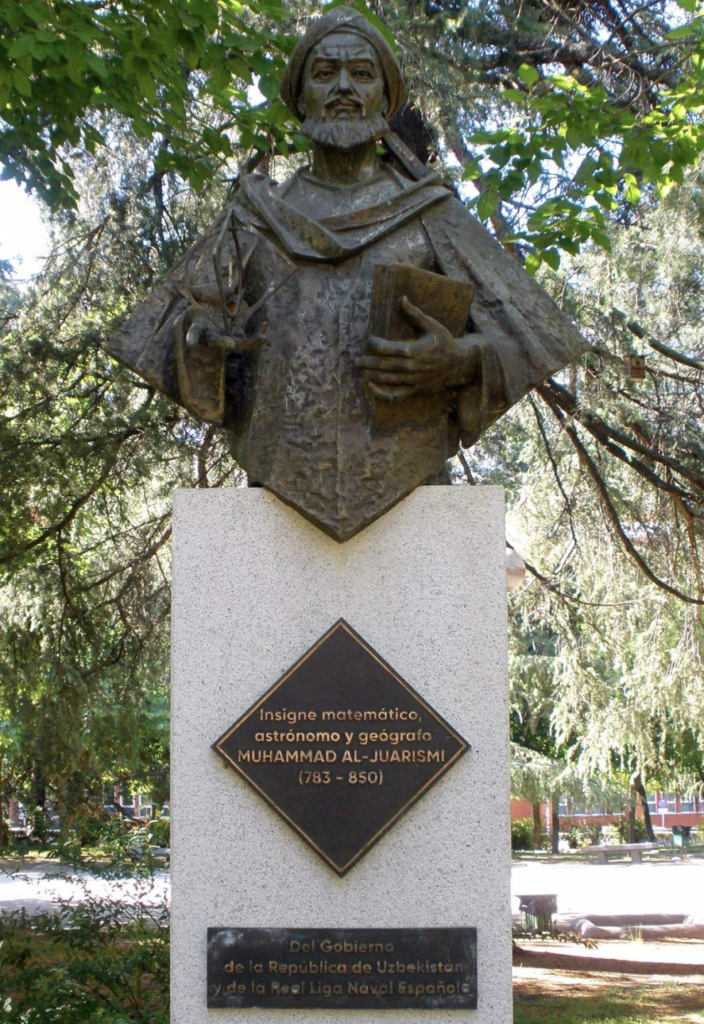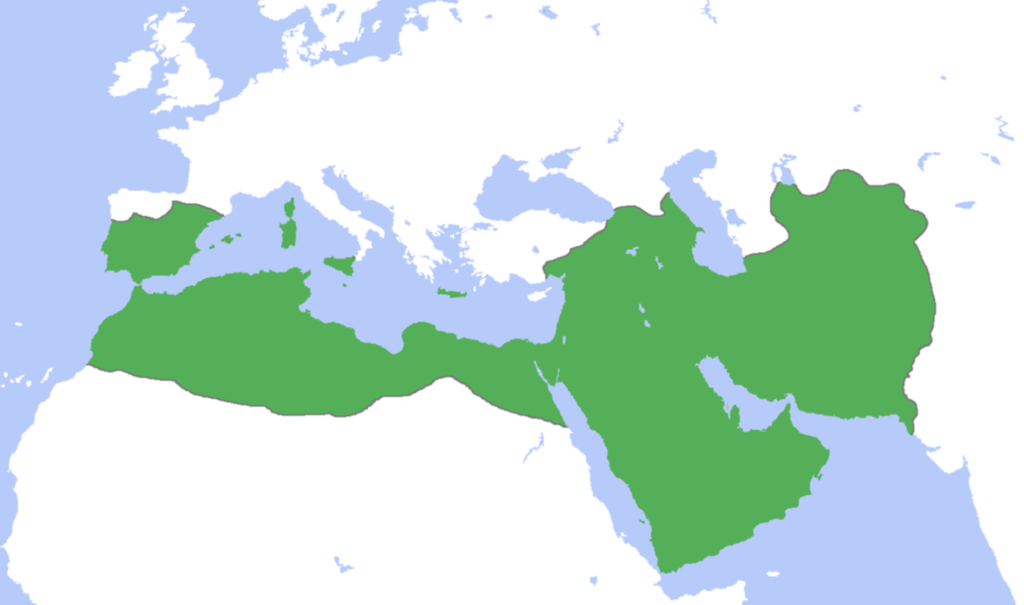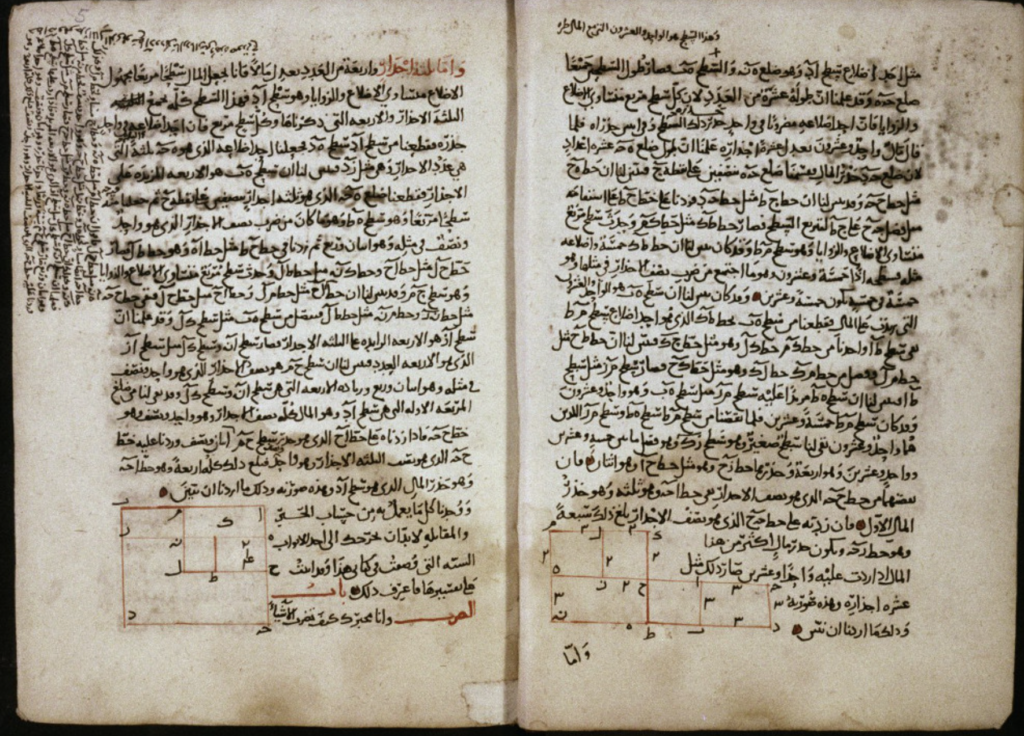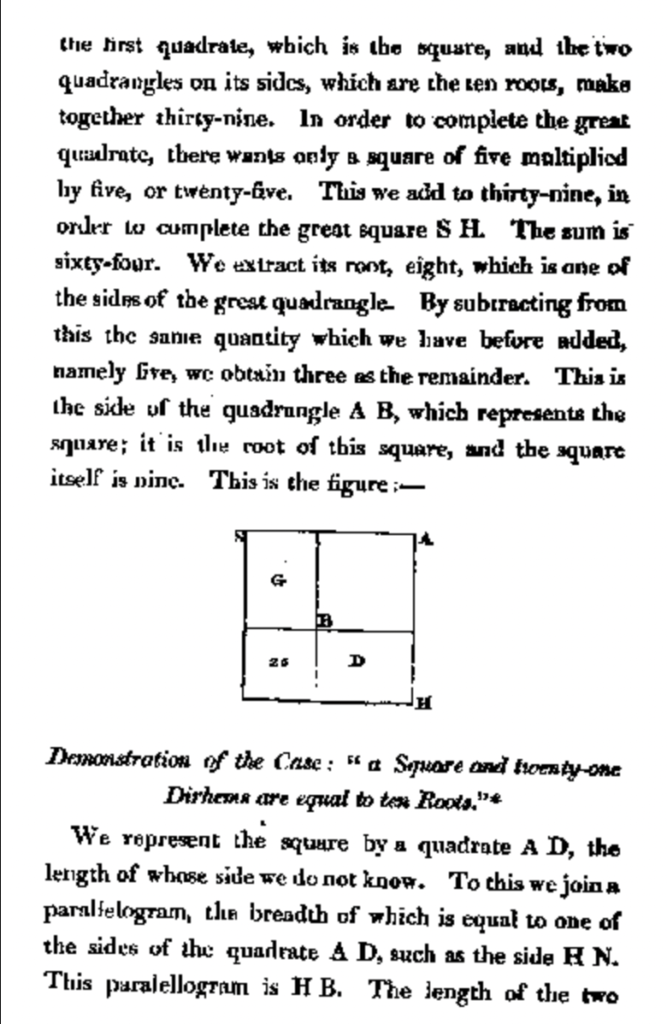"Al-Jabr" The Origins of Algebra

By: Adam Abdel-Qader / Arab America Contributing Writer
During National Arab American Heritage Month, it is critical not only to reflect on current Arab American endeavors but to recall some of the most invaluable achievements known to the world that Arabs were crucial in creating. Around 820 CE, Muhammad Ibn Musa al-Khwarizmi wrote the first-ever treatise on the mathematical practice of algebra. “The Compendious Book on Calculation by Completion and Balancing,” or “al-Jabr,” paved the way for various fields of mathematics and was a tremendous milestone for Arab and Muslim excellence in STEM-related areas.

Islamic Golden Age:
The Islamic Golden Age describes a period in Islamic history where all societal aspects, such as science, culture, and economic flourishment, were prospering to the fullest extent. This era dates back to 700 CE, around the time of the Abbasid Caliph, which actively pursued the installment of new-coming Arabic-speaking intellectuals such as Muhammad Ibn Musa al-Khwarizmi himself into the House of Wisdom in Baghdad.
Baghdad was one of the world’s largest cities at the time. As scholars convened from across the Muslim and Arab world, they translated much of the world’s combined knowledge into Arabic texts.
Eventually, this period of Islamic prosperity fell through with the caliphate’s collapse due to a large and victorious Mongol invasion in the 13th century.
Although there are also differing arguments for when the golden age of Islam ended, to follow along with the true origins of algebra in mathematics, it is only essential to concentrate on the beginning half of the Islamic Golden Age and the text that created the independent study.
Muhammad Ibn Musa al-Khwarizmi:
Al-Khwarizmi had another less frequently mentioned section of his name called al-Qutrubbulli. This name is highly significant because it potentially derives from his birthplace, Qutrubbul, a district near Baghdad. This last name could possibly link his heritage to the Arab world. His birthright and direct lineage are often disagreed upon; however, he most definitely created his contributions in the heart of the Arab world.
In 820 CE al-Khwarizmi became head of the famous library, House of Wisdom, during the Golden Age of Islam and was also pronounced as the library’s astronomer.
While very few details remain about his personal life and the true extent of his non-academic endeavors, there is still much to be said about a man of such profound intellectual status and the sheer assistance he gave to all his fields of practice. His contributions to mathematics, cartography, geography, and astronomy were astronomical and revolutionary both in the past and today.

“Al-Jabr”:
Does “al-Jabr” sound vaguely familiar to you? After saying Algebra and “al-Jabr” in your head a couple of times, it definitely should. The actual term al-Jabr in Arabic translates into “‘completion’ or ‘rejoining'” and the exact origin of the English term algebra is derived from al-Jabr.
As the first and foremost treatise on algebra, al-Jabr was a text that single-handedly laid the foundation for modern algebra. For this reason, Al-Khwarizmi is frequently revered as the true father of algebra. Besides this treatise being the first piece to make algebra an independent study, Al-Jabr was invaluable in light of its systematic illumination and resolution of linear and quadratic equations. It also provided extensive information regarding the area and volume of particular objects and plains. Notably, half of al-Jabr’s length went into great detail and description of some valuable Islamic inheritance laws, which undoubtedly required and still do require algebraic fluency.
The everlasting influence of al-Jabr resides in its knowledge, techniques, and algebraic symbols. The knowledge and techniques al-Khwarizmi and other Islamic golden age scholars developed laid the foundation for fields such as engineering, architecture, and technology. The algebraic symbols and those algebraic methods al-Jabr employed are still frequently used and highly necessary in modern technologies such as computer programming, telecommunications, and cryptography.

Conclusion:
To some Arabs, Muslims, and Persians, “al-Jabr” and its creator Muhammad Ibn Musa al-Khwarizmi, are household names. Al-Khwarizmi pioneered his mathematical vision, laying the foundation for modern mathematics and science.
Al-Jabr played one of the most crucial roles in preserving and transcending knowledge during the Islamic Golden Age. It has also managed to have a far-sighted impact on the advancements of technology and other fields within the Arab world and far beyond.
While the treatise’s historical and intellectual significance in the Arab world remains undeniable, it is necessary to reflect on this outstanding achievement and further enlighten individuals on this milestone that sparked innovation, mathematical evolvement, and technological achievement.








